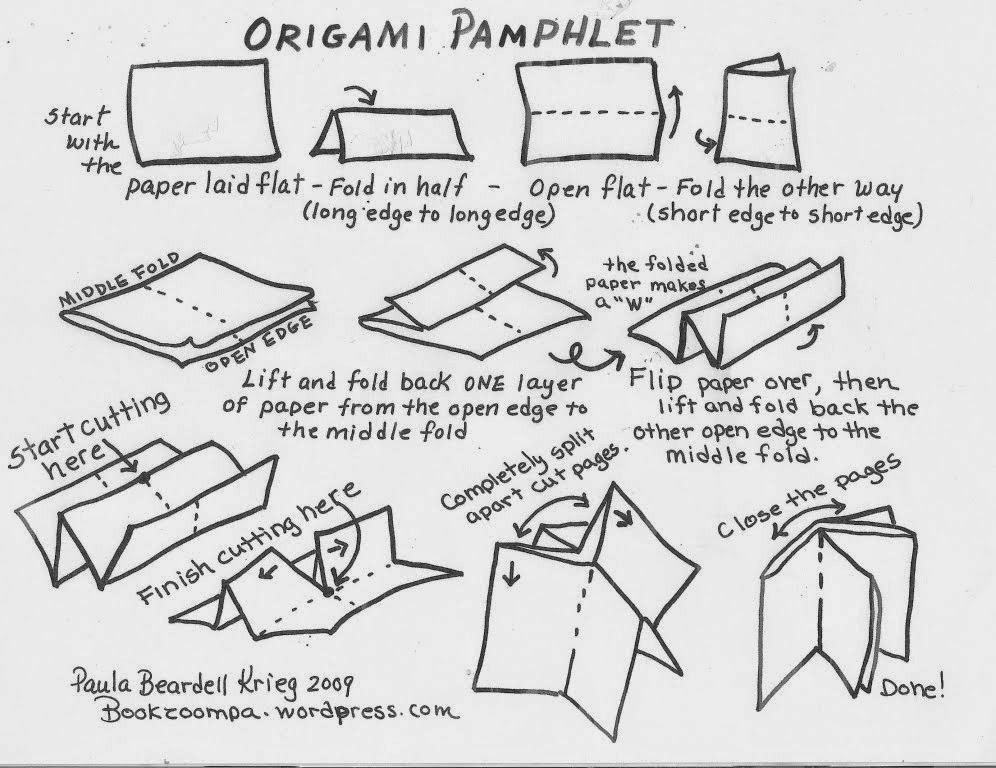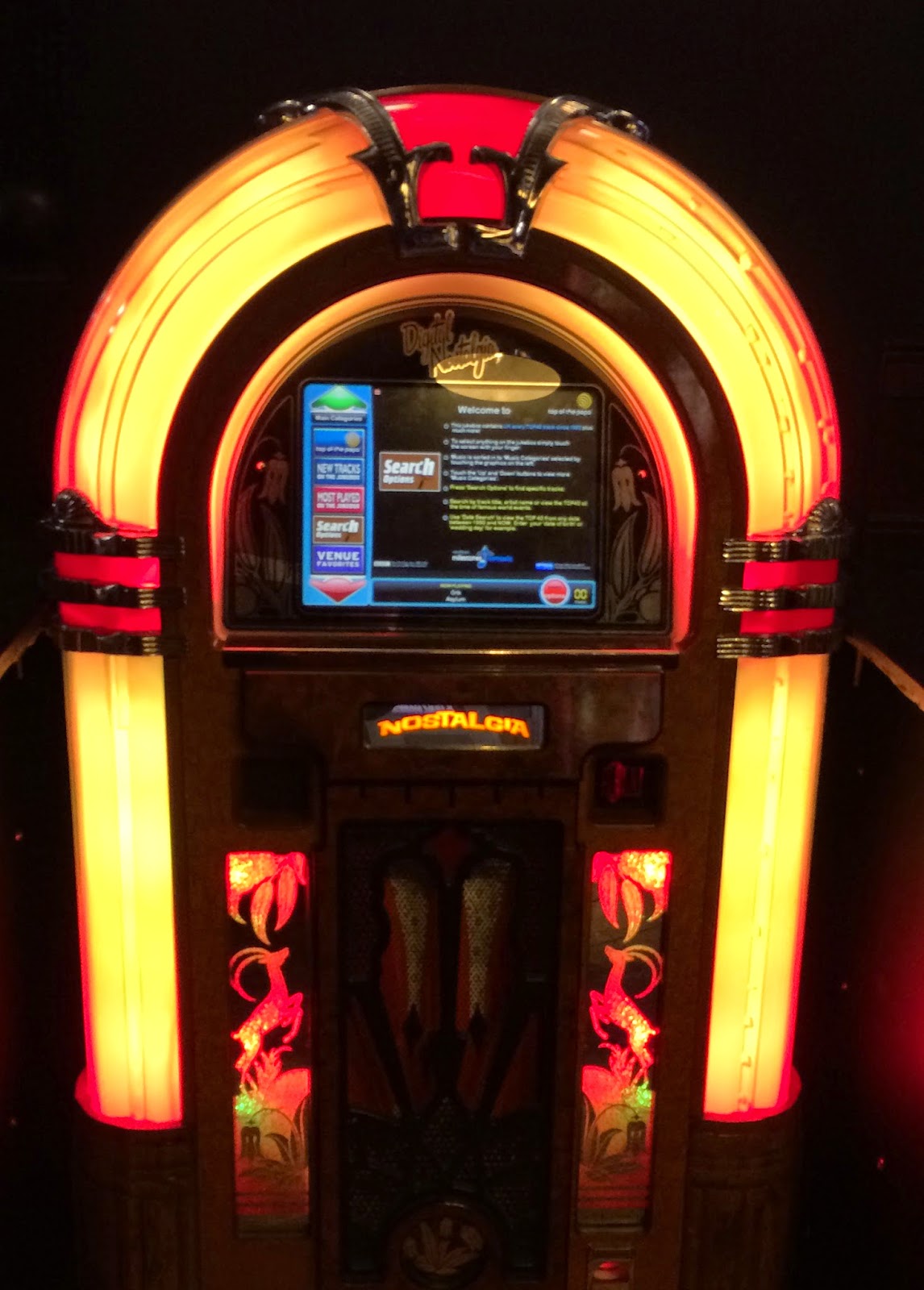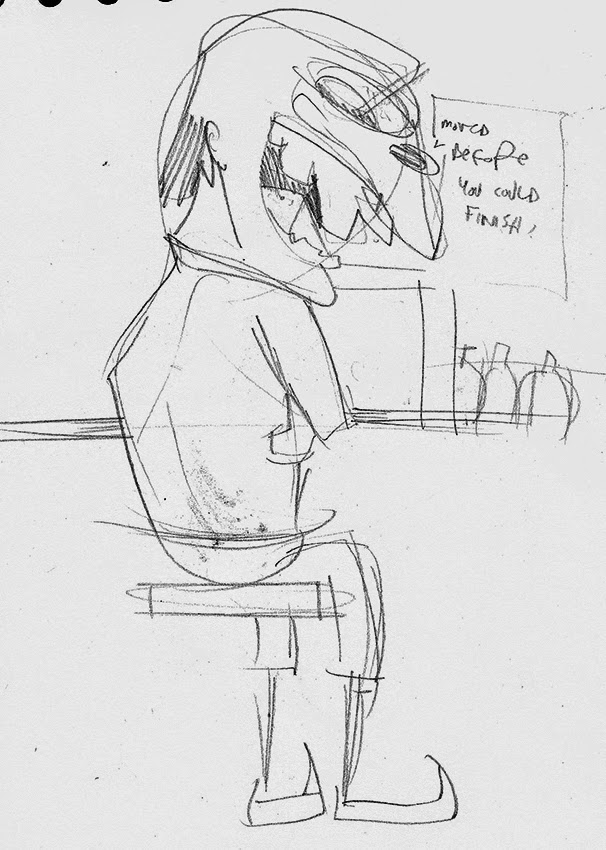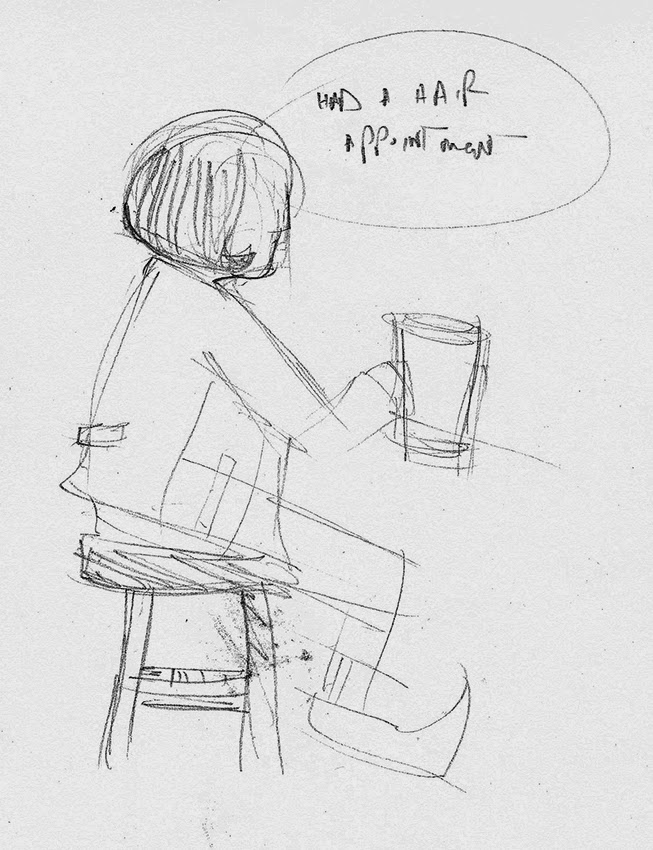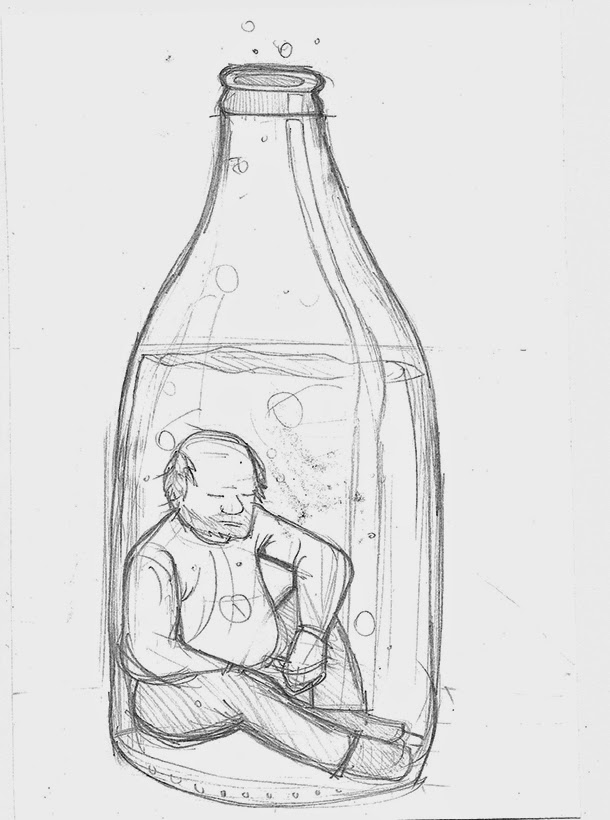First thing was to expose our designs to our printing screen, which had been prepped with emoltion a couple of weeks earlier.With the exposure level set to 11 (different paper types have different levels) we shut the kodatrace design sheets in the vacuum seal for a few minutes Exposing the screen means that anything black on the design would block the UV light getting to the screen,and in any clear (or 'white') areas where the light could get through would then go hard, ready to wash off.

Using a hose and a sponge we washed the screen removing the light sensitive emulsion from the 'white' areas of the book design, a bit too vigarously which lead to some of the black areas to come off and ruin part of the image.Luckily we'd prepared another screen previously, so we had that as a back-up. So we exposed that one and washed it a bit more gently and left it in the drying room for 30mins or so.
While that was drying we finalised and mixed our two colours to be used on our prints. Rather than a shade of Teal that we'd initially worked with we changed to a bottle green, in keeping with the pub theme, and also with the Heineken style design Georgie had designed for the cover page the book. To compliment the green we made up a very dark brown, which also reflected the interior of the old "rustic" smelling pubs we visited.
Screen dry, we had time to apply some more emulsion to various areas in which it had flaked off. This is easy enough to do with a small brush.
Some of the group have a bit more screen printing experience than the rest of us so they took the lead, it needs to be quite a fast moving process otherwise it can effect the outcome of the prints (ink can dry out on the screen). I was happy to assist where i could as its completely new to me, i also wanted to learn as well as produce some sharp-looking final prints.
Applying a good amount of equal pressure whilst 'squeegeeing' the ink across the screen is important, as too light will make the print look faded and patchy. However this can produce some interesting, unique results. But on this occasion, this wasn't a desired effect.
Something we'd all overlooked was the fact that we hadn't included registration marks on our final screen - meaning that lining up our images on the print bed was a bit trickier than it should've been. We overcame any major disasters by using masking tape as markers in the corner of the paper.
A drawback with taking so much time planning every possible outcome is that i felt i could've contributed to another page of the book maybe. Although i did offer my services and was more than happy to stay later at uni to knock out another design, Georgie took the bull buy the horns and had taken care of it. She makes a really good ' project manager/ team leader' no matter how much she insists that she's isn't good at that sort of thing!
Overall, i still feel i need to be producing loads more initial ideas,and get more inspired by my given or chosen subject somehow- but it's proving a hard obstacle to overcome at the moment. Just hope i get a chance to pursue screen printing within future course/personal projects.






























